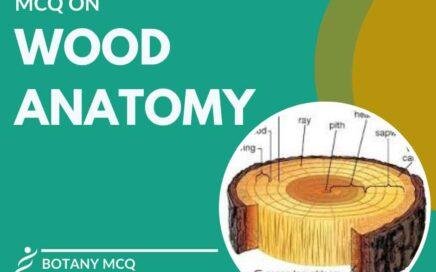
MCQ on Wood Anatomy
Wood anatomy is the study of the structure and organization of wood tissues. It includes examining cells like vessels, tracheids, fibers, and rays that form […]

Wood anatomy is the study of the structure and organization of wood tissues. It includes examining cells like vessels, tracheids, fibers, and rays that form […]

A monocot stem consists of epidermis with stomata, a scattered arrangement of vascular bundles containing xylem and phloem, and ground tissue. The stem lacks secondary […]

A monocot root comprises an epidermis with root hairs, a cortex for storage, and an endodermis with a Casparian strip. The vascular cylinder contains xylem […]

A monocot leaf has a single layer of epidermis with stomata for gas exchange. Vascular bundles are scattered throughout the ground tissue, lacking a distinct […]

A dicot stem features epidermis, cortex, and pith. Vascular bundles, arranged in a ring, contain xylem for water transport and phloem for nutrient transport. The […]

A dicot root consists of a central vascular cylinder surrounded by cortex and endodermis. The vascular cylinder includes xylem for water transport and phloem for […]

A dicot leaf typically exhibits a broad, flattened shape with a reticulate venation pattern. Its structure includes an epidermis, mesophyll with palisade and spongy layers, […]

Plant adaptations are specialized features or behaviors that enable plants to survive and thrive in specific environments. These adaptations include structural, physiological, or behavioral traits […]

Xerophytes are plants adapted to arid or dry environments, possessing specialized features to conserve water. They exhibit traits like reduced leaves, succulence, deep root systems, […]